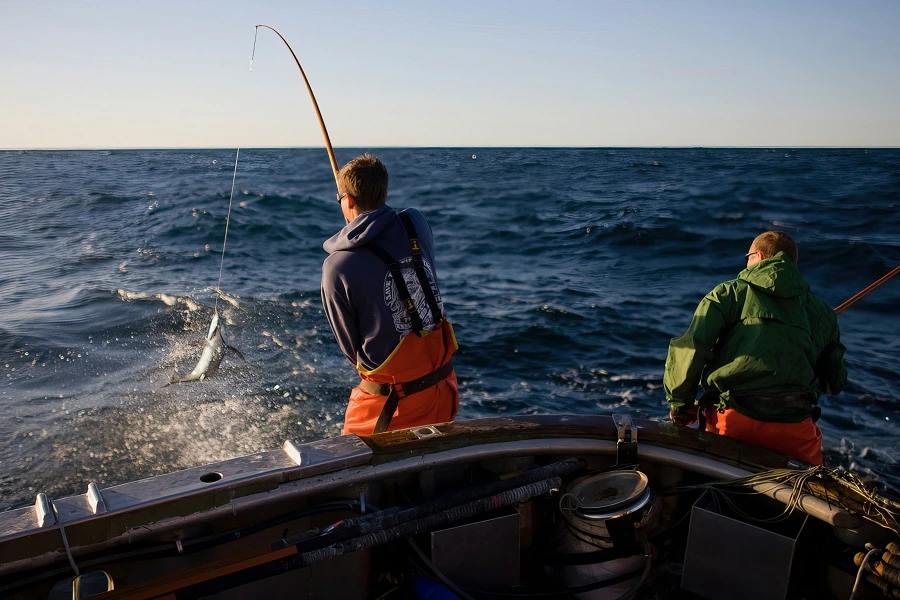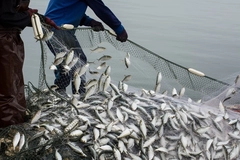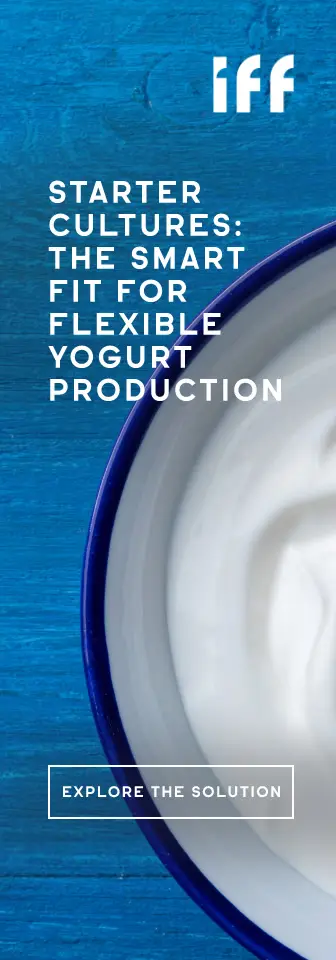Wild Planet: Accountability and consistency crucial to seafood sustainability
Key takeaways
- Conscious consumerism is driving demand for sustainable seafood, as consumers seek transparency in sourcing and fishing methods.
- Wild Planet prioritizes traceability and transparency, using responsible fishing methods and eco-conscious packaging to meet consumer demand for ethical seafood products.
- The future of sustainable seafood lies in restoration and innovation, with enhanced traceability and AI use helping reduce environmental impact.
Consumers today shop with intent. Food and beverages that align with their sustainable and ethical choices are preferred, and brands prioritizing lower environmental impacts or local sourcing catch attention on supermarket aisles. Canned seafood brand Wild Planet describes this trend of “conscious consumerism” as having created a new transparency-focused landscape that has brought mindful industry practices to the forefront.
Brands that do not incorporate sustainable practices and clear communication could lose a crucial and expanding segment of the global seafood industry, which is steadily attracting consumer and regulatory attention in a bid to protect and restore oceans.
Seafood provides protein for over three billion people and supports half a billion livelihoods, according to the World Benchmarking Alliance. However, in 2023, 12 of the world’s 30 largest seafood companies had sustainability scores below 20/100, indicating major gaps in sustainable production.
Food Ingredients First speaks with Sue Thanavaro, brand marketing director of US-based Wild Planet, to understand the seafood industry’s biggest sustainability bottlenecks and the emerging role of AI and supply chain investments in helping manufacturers make sustainable seafood practices the new industry standard.

How is conscious consumerism influencing sustainability practices in the seafood industry?
Thanavaro: Conscious consumerism is about intention. It’s a growing movement of aligning purchasing decisions with personal values — prioritizing environmental responsibility, ethical sourcing, and long-term impact over convenience or cost.
In the seafood industry, this shift has been transformative. Today’s consumers want transparency — they want to know where their fish comes from, how it was caught, and what impact those methods have on ocean ecosystems. That curiosity has driven real accountability, making traceability and sustainability not just nice-to-have features but core expectations of responsible seafood brands.
We’ve built our entire approach around this mindset. From responsible fishing methods to eco-conscious packaging, every step of our process is intentional. Consumers can feel confident that their purchase decisions are helping to protect the ocean for future generations. Conscious consumerism has turned everyday purchases into powerful acts of advocacy, helping to make sustainable practices the new standard across the industry.
 Consumers today demand transparency on where their fish comes from and its impact on ocean ecosystems, says Thanavaro.
Consumers today demand transparency on where their fish comes from and its impact on ocean ecosystems, says Thanavaro.
What are the biggest challenges the seafood industry faces when adopting sustainable practices, and how can companies ensure long-term commitments?
Thanavaro: Adopting sustainable practices like pole-and-line fishing comes with both logistical and financial challenges. These methods are more labor-intensive, slower, and often more costly than large-scale industrial techniques, such as purse seining or longlining. Many fisheries around the world also lack the infrastructure, training, or financial resources to make that transition independently. With global supply chains facing constant volatility, maintaining long-term commitments to these practices can be challenging for some companies.
We’ve met these challenges by building strong, lasting partnerships with responsible fishers and investing in supply chains that prioritize ocean health, product quality, and community well-being. Over time, this approach has proven that sustainability isn’t just an ethical choice — it’s a resilient, forward-thinking business model that benefits everyone involved.
What steps should seafood companies take to authentically adapt to conscious consumerism and remain competitive?
Thanavaro: Sustainability is a philosophy, not a department or a job title. For seafood companies to authentically meet the expectations of conscious consumers, they must be willing to look deeply into their sourcing practices and confront areas that need improvement. This means tracing products all the way back to the source, verifying fishing methods, and perhaps most importantly, maintaining radical transparency throughout the process.
True sustainability doesn’t happen overnight. It requires accountability, consistency, and a genuine commitment to progress. Consumers today can easily distinguish between brands that are simply checking a box and those that truly lead with purpose. Companies willing to do the hard work of transparency and continual improvement are the ones that will earn lasting trust and stay competitive in the long term.
 Wild Planet uses pole-and-line fishing — a traditional, sustainable method where individual fish are caught using a single fishing pole and line instead of nets.
Wild Planet uses pole-and-line fishing — a traditional, sustainable method where individual fish are caught using a single fishing pole and line instead of nets.
How important is transparency in the seafood industry to ensure consumers trust sustainability claims?
Thanavaro: Transparency is the foundation of consumer trust in seafood. With supply chains that often span oceans and continents, vague claims or inconsistent labeling can quickly undermine confidence. Today’s shoppers are looking for proof, which is why full traceability, from catch to can, is essential.
At Wild Planet, every product we sell lists the catch method and species, and we source exclusively from well-managed fisheries that align with our strict sustainability standards. We engage openly with certification partners and welcome third-party verification because we believe accountability should be public, not internal.
Beyond compliance, transparency also means being honest about where there’s still room to grow. By leading with openness and integrity, we aim to set a higher standard across the seafood industry, one where transparency isn’t just expected but embraced.
How can the seafood industry encourage mindful consumption, helping consumers make more eco-conscious decisions without compromising taste or convenience?
Thanavaro: Mindful consumption is about eating with awareness and making choices that are good for both people and the planet. As an industry, we have a responsibility to make sustainability easy, accessible, and delicious. Consumers shouldn’t have to choose between convenience and consciousness. When people realize that responsibly caught fish tastes delicious, supports healthier oceans, and nourishes communities, sustainability shifts from being a duty to becoming a desire. That’s the mindset we want to encourage.
We work to remove barriers and empower our customers through clear, transparent information — helping them understand exactly what they’re buying and why it matters. This clarity builds confidence and connection, turning every purchase into an opportunity to be part of something much bigger than themselves: a collective effort to protect our planet’s oceans.
How can emerging practices further reduce environmental impact while meeting consumer demand?
Thanavaro: Restoration is the key to the future of sustainable seafood. It’s no longer enough to simply “do less harm.” The goal must be to leave the oceans in a healthier state than we found them.
New tools and technologies are making that future possible. Enhanced traceability systems and AI-powered data collection are giving us unprecedented visibility into what happens beneath the surface. As these innovations evolve, they will continue to strengthen accountability across global supply chains and help protect marine biodiversity. Ultimately, the future of sustainable seafood lies in collaboration to ensure that both the industry and the oceans can thrive together.
 Wild Planet products list catch methods and species, sourcing exclusively from well-managed, sustainable fisheries.
Wild Planet products list catch methods and species, sourcing exclusively from well-managed, sustainable fisheries.












